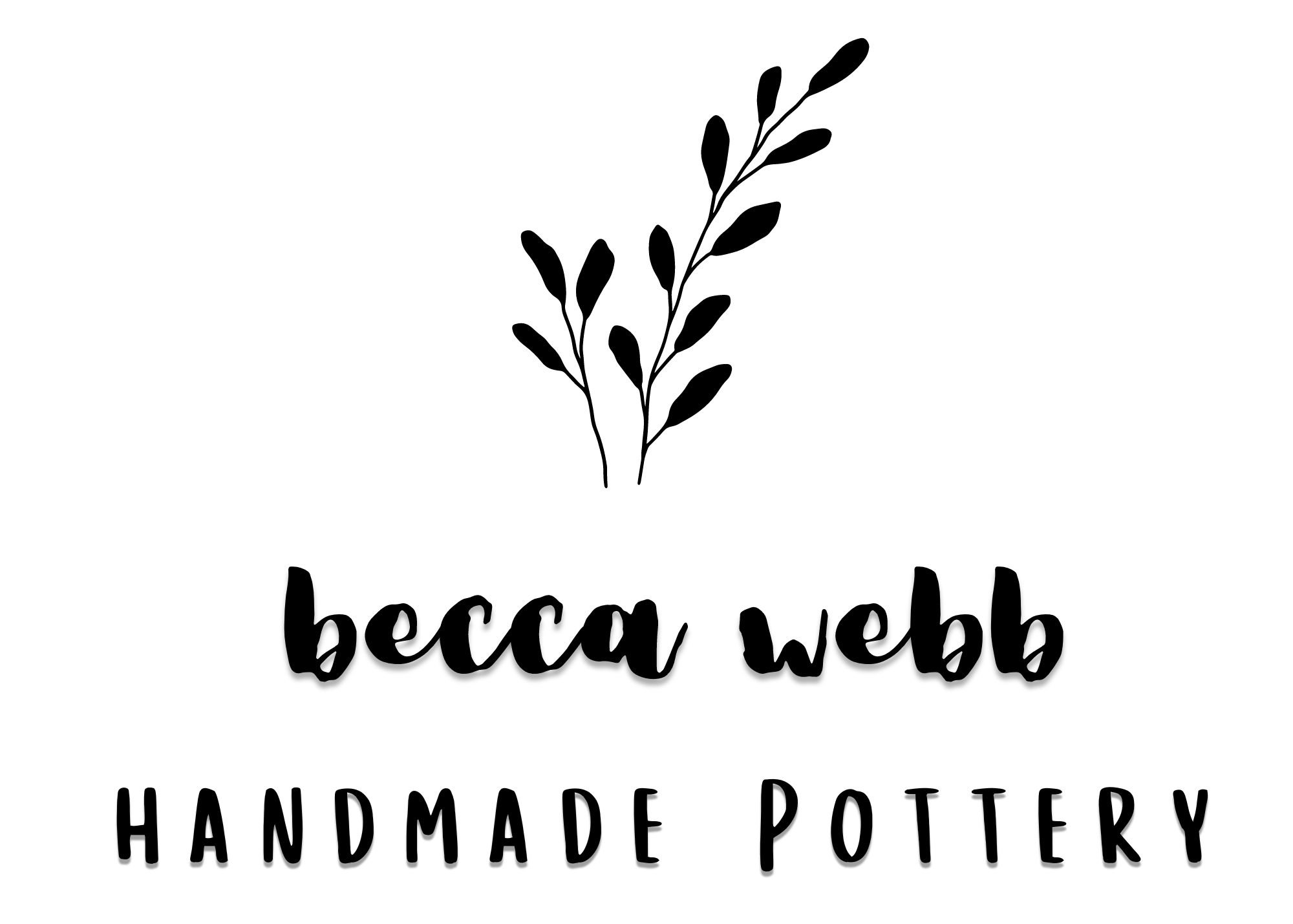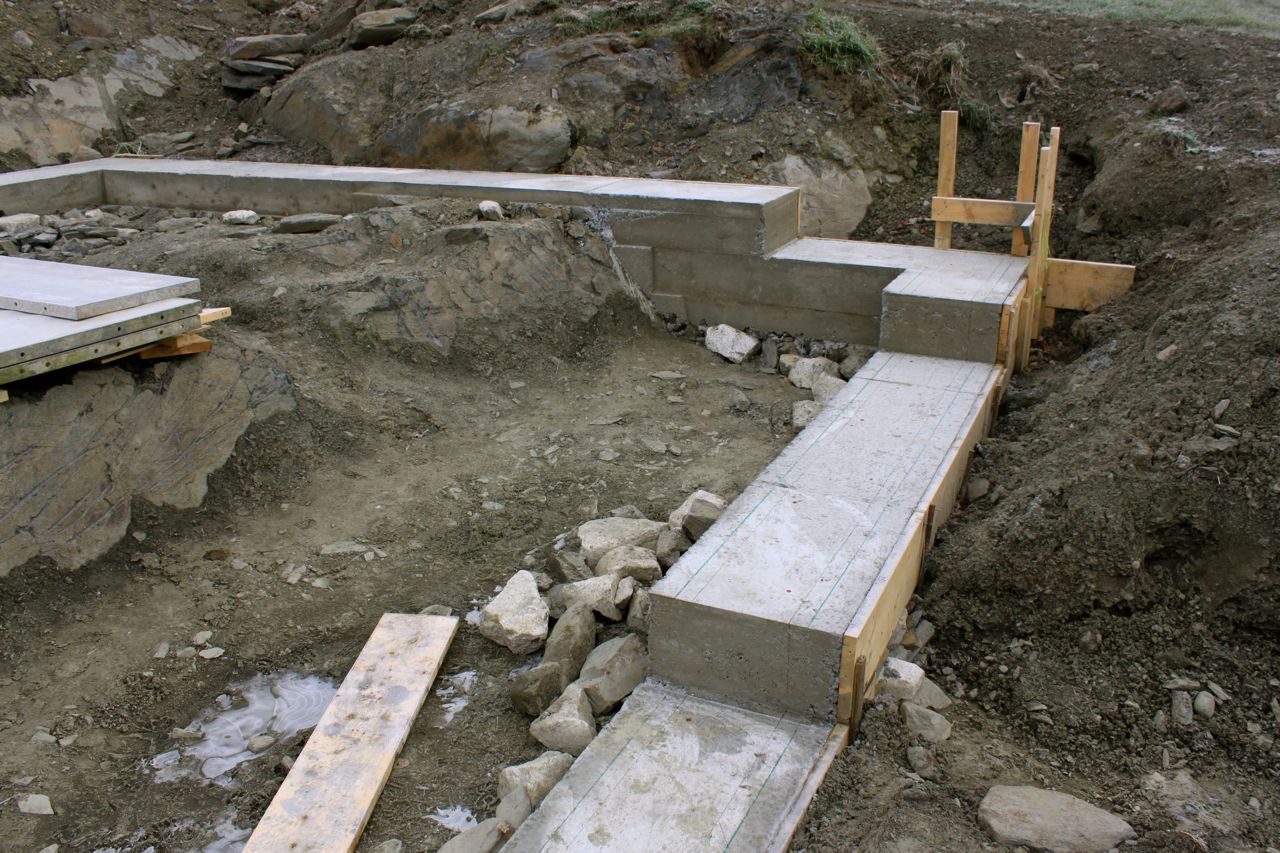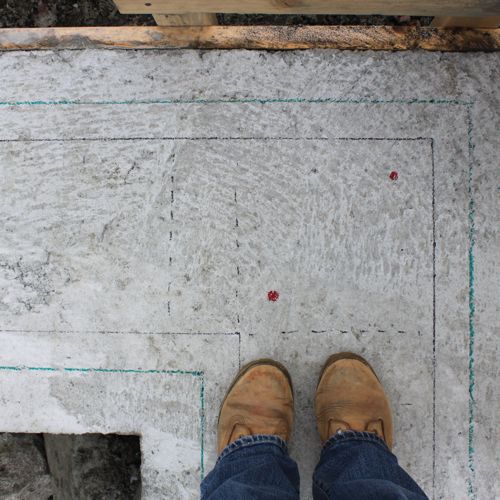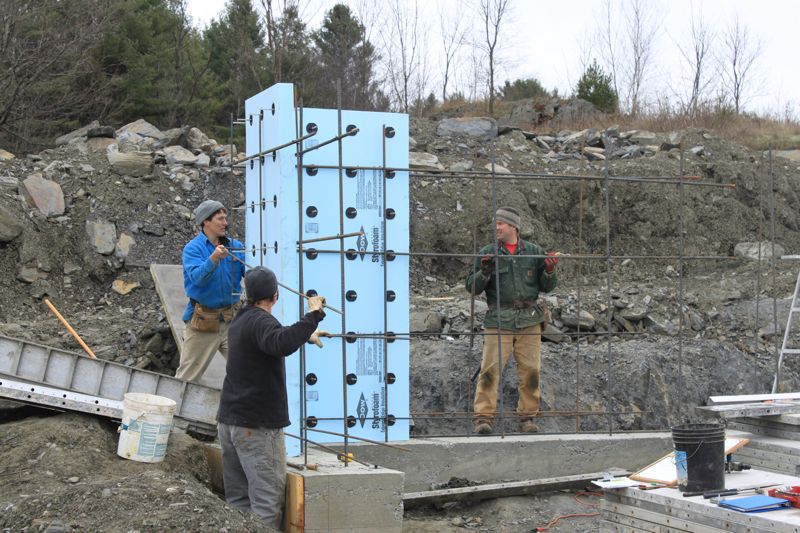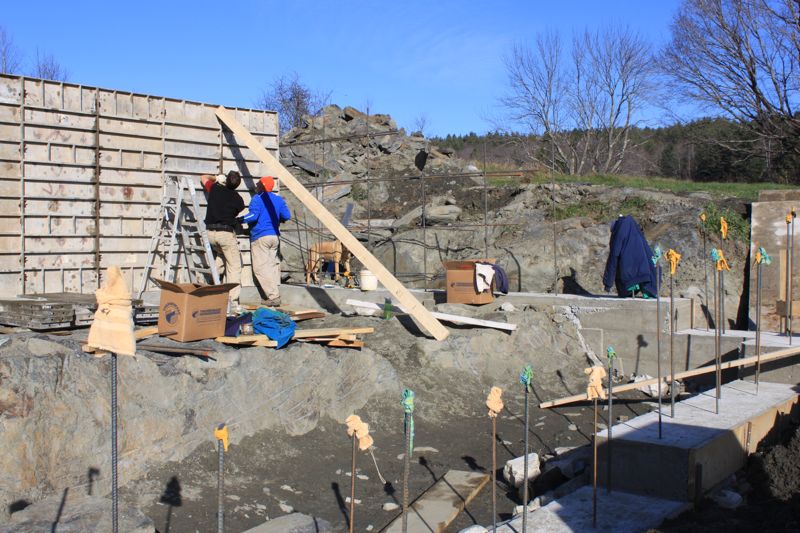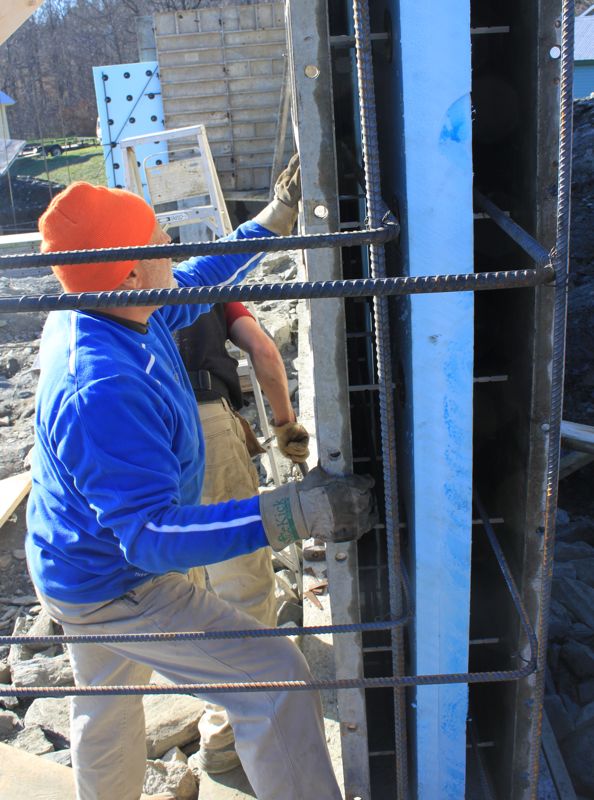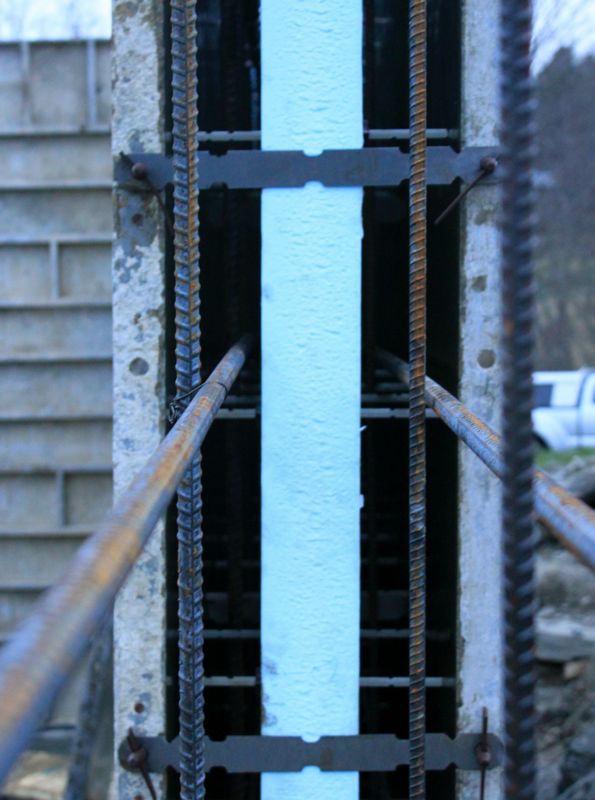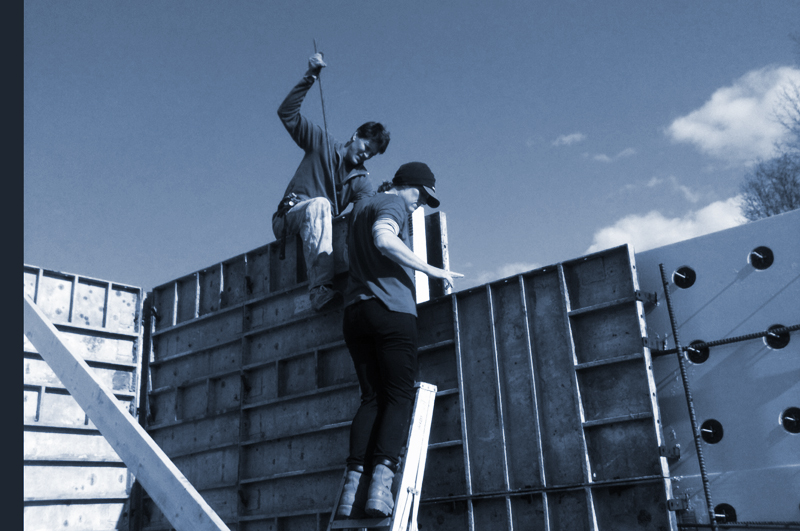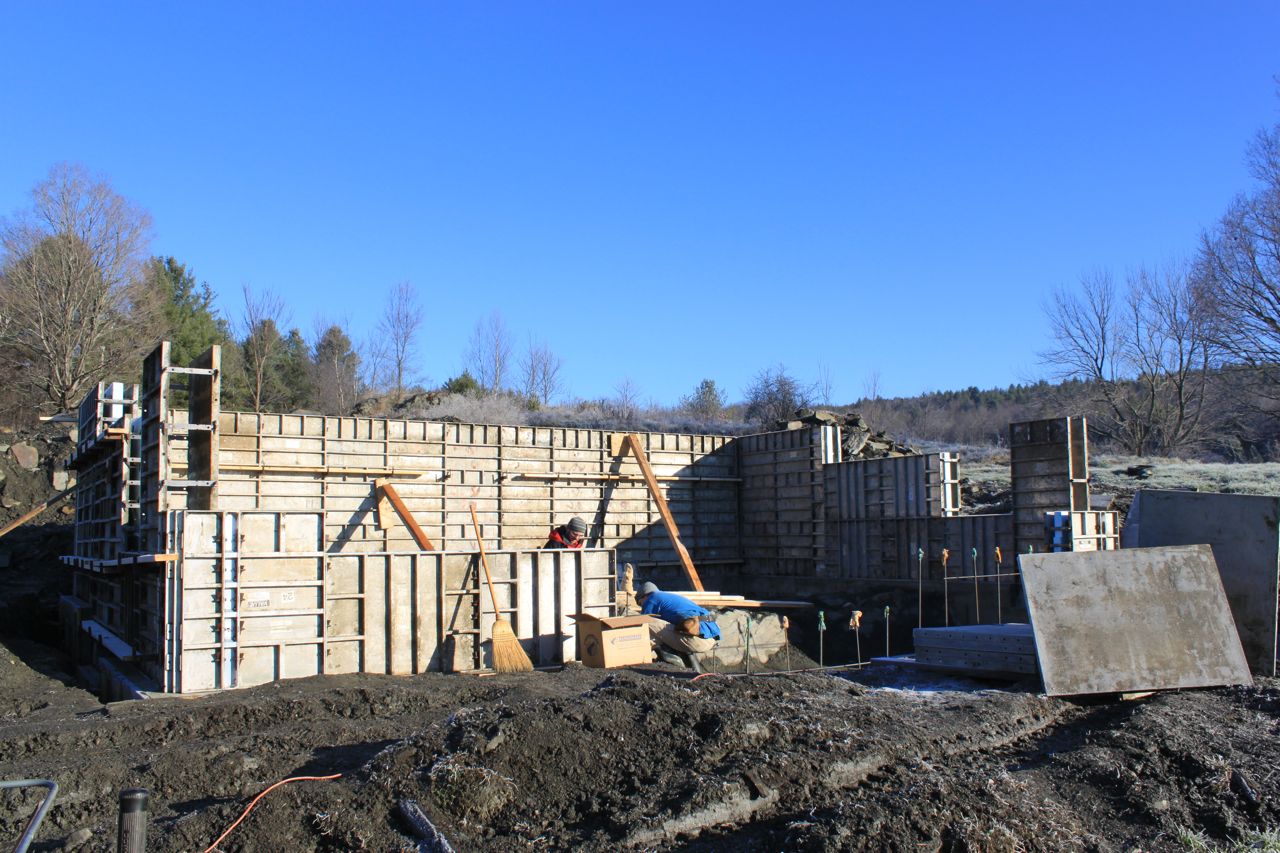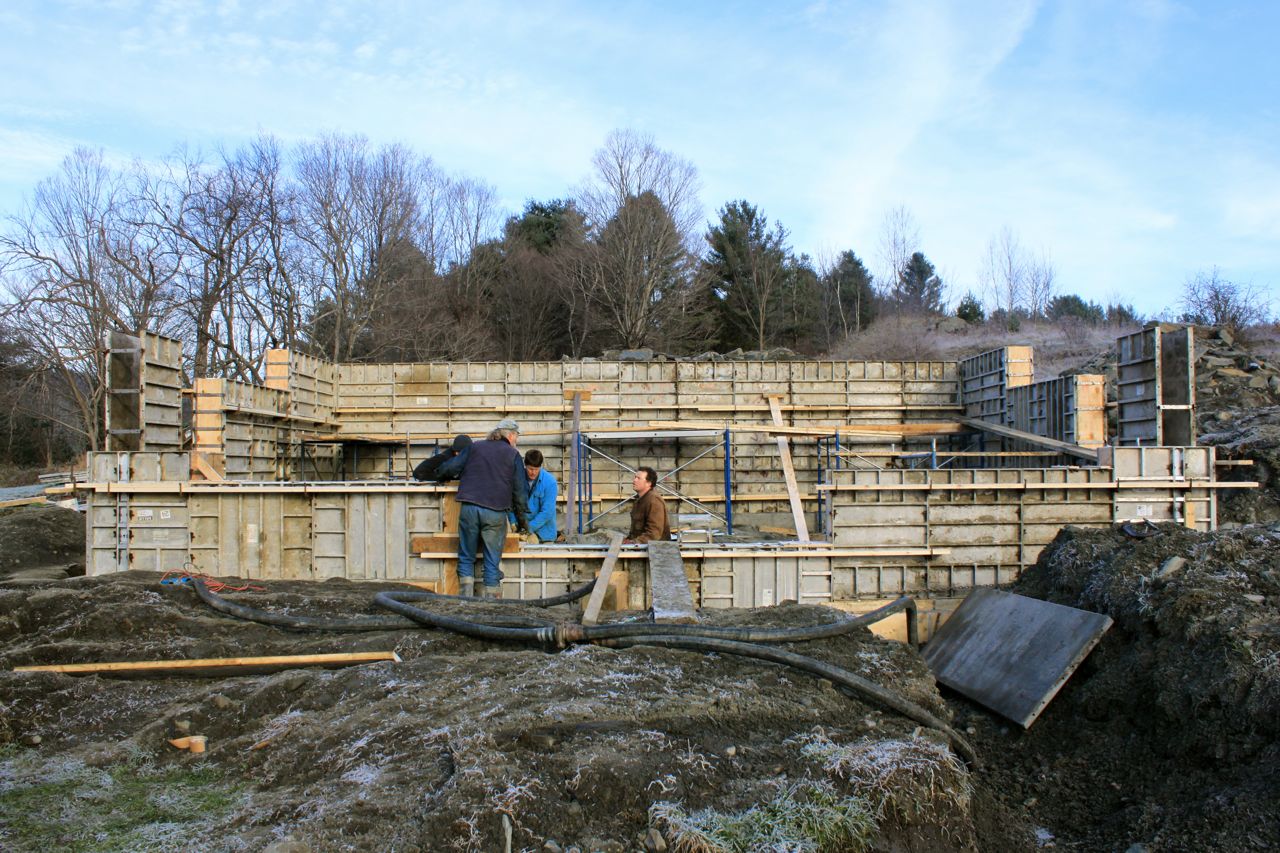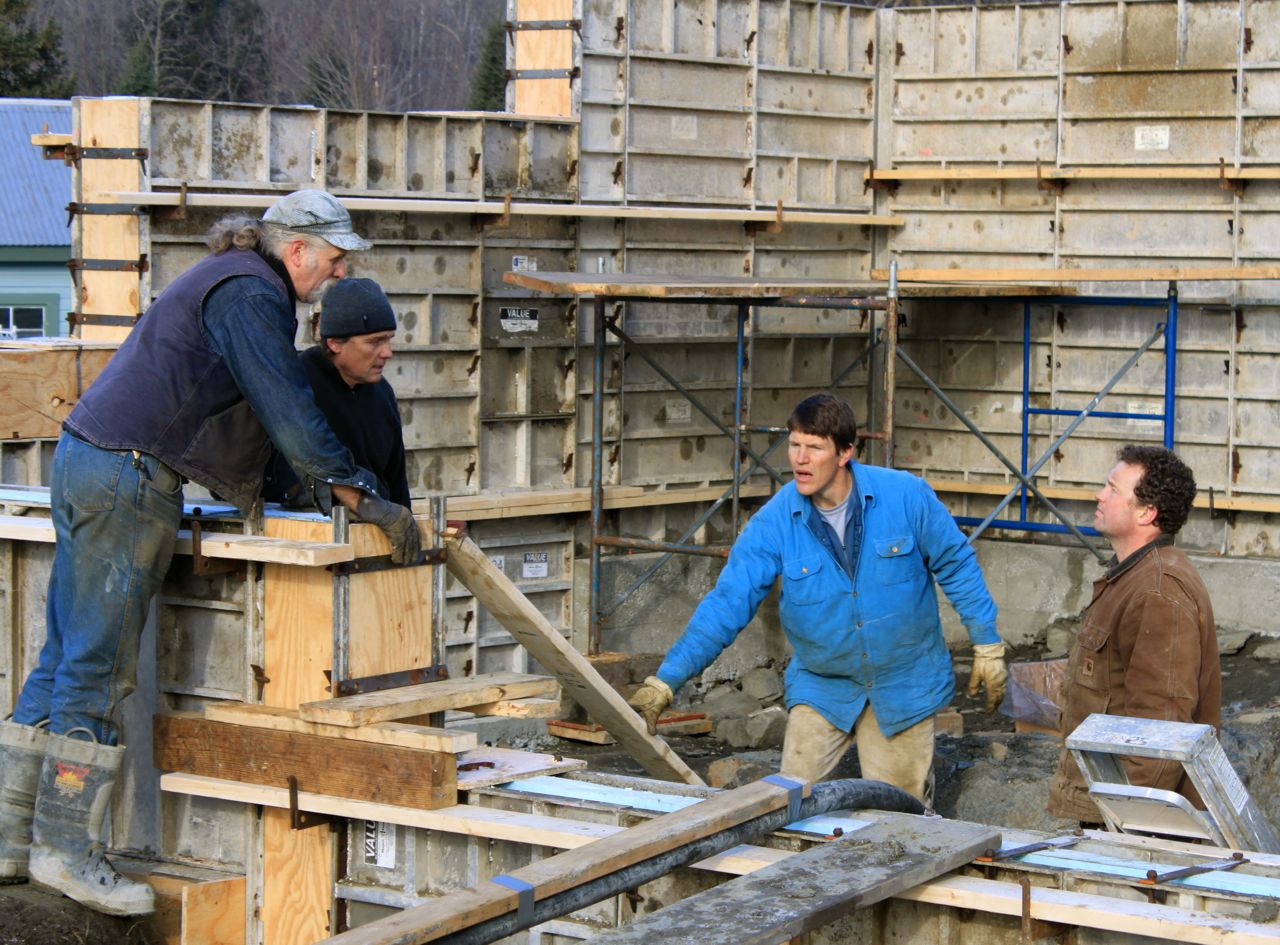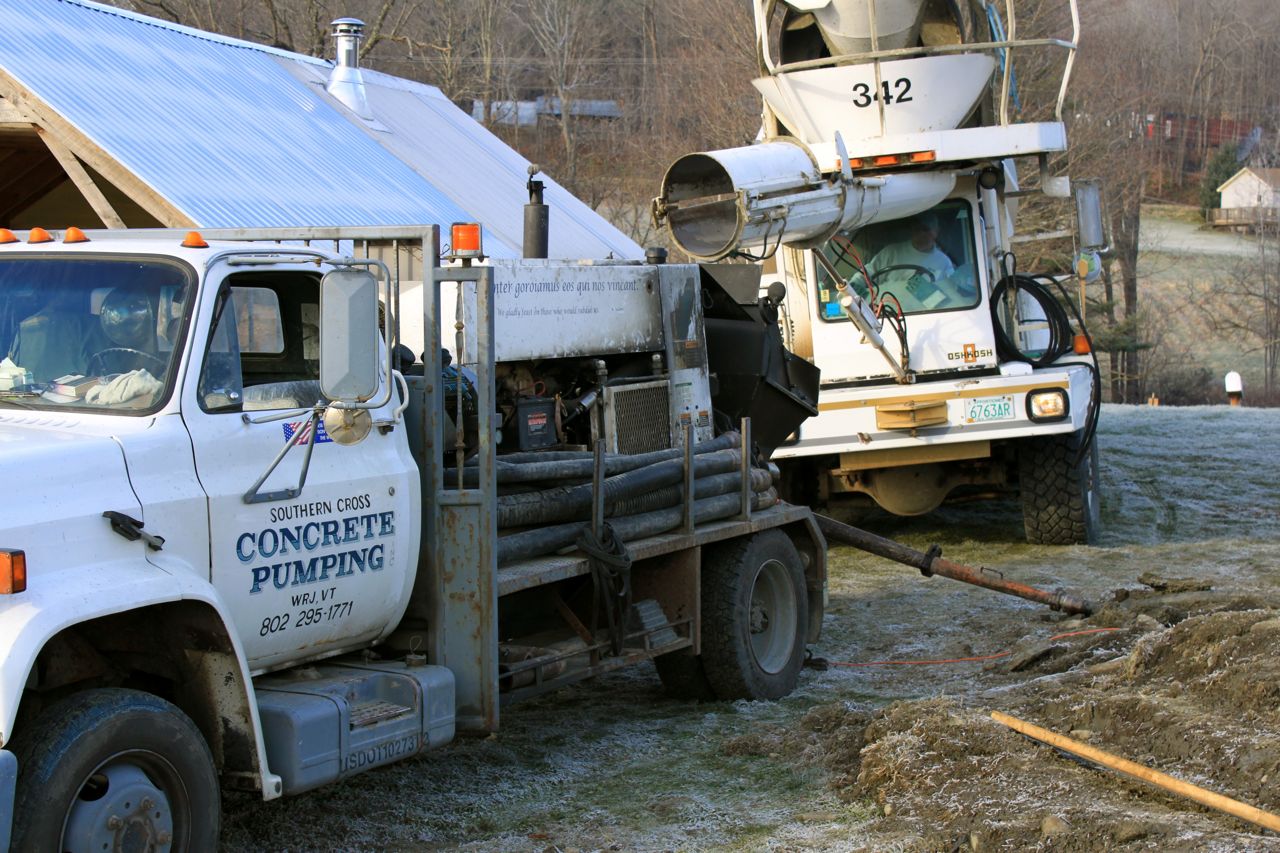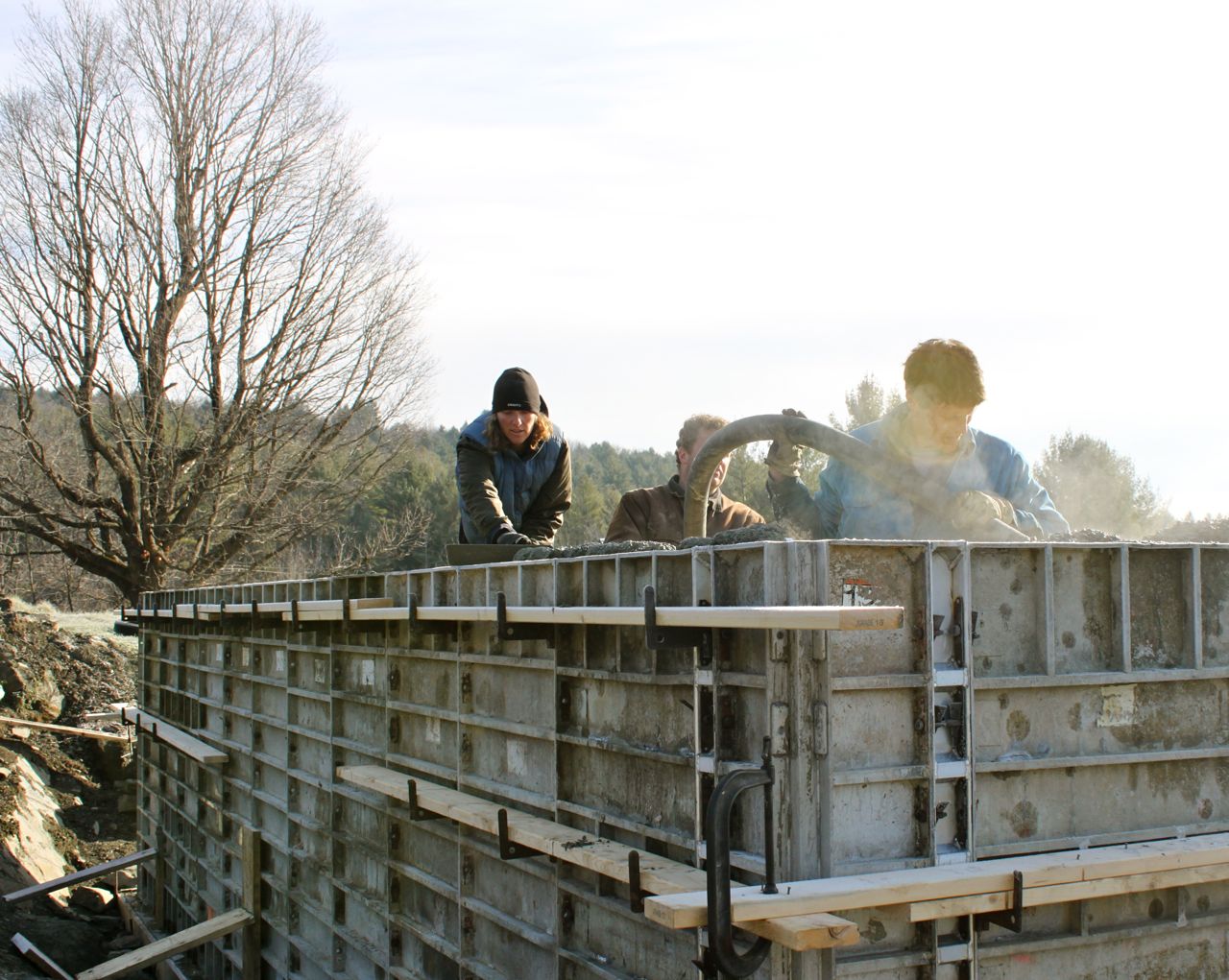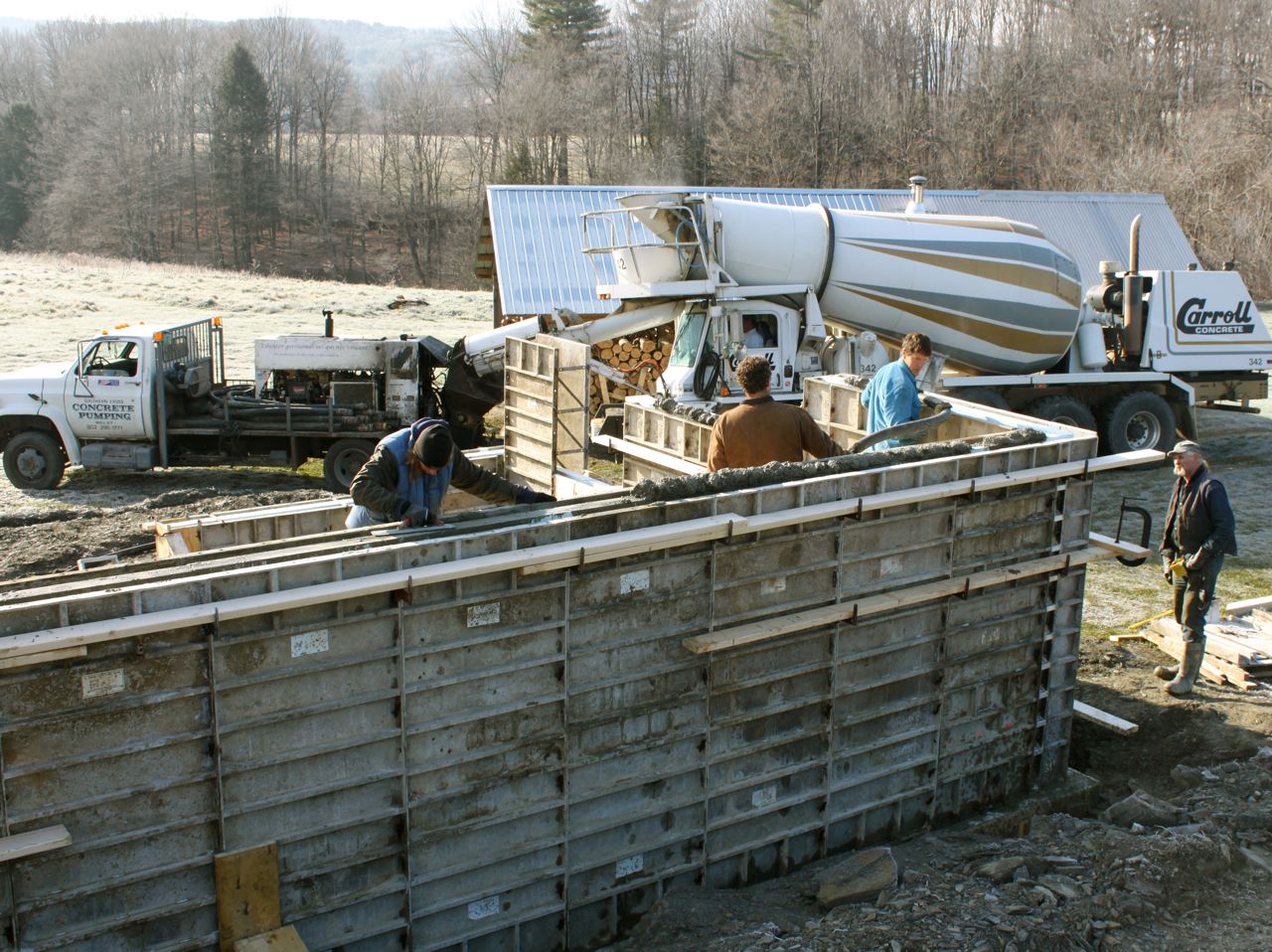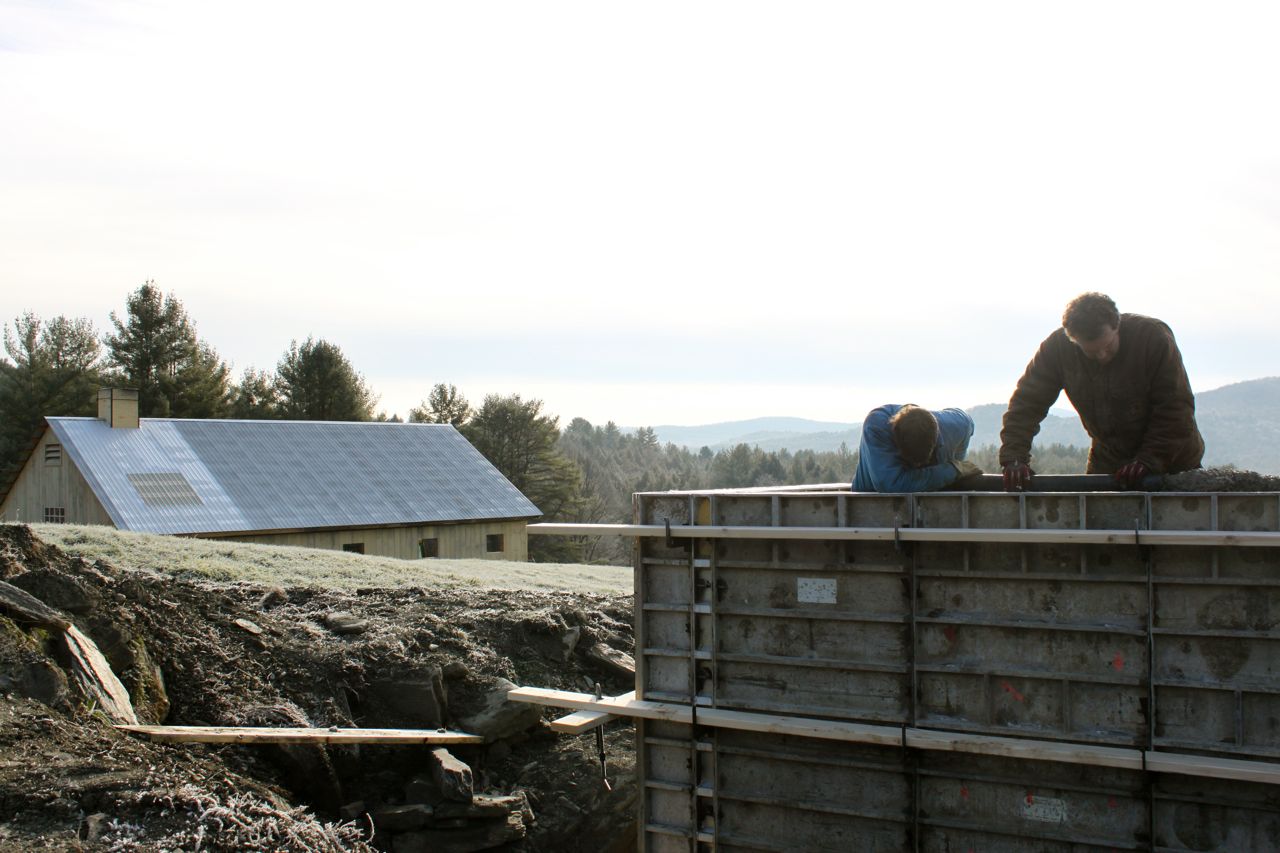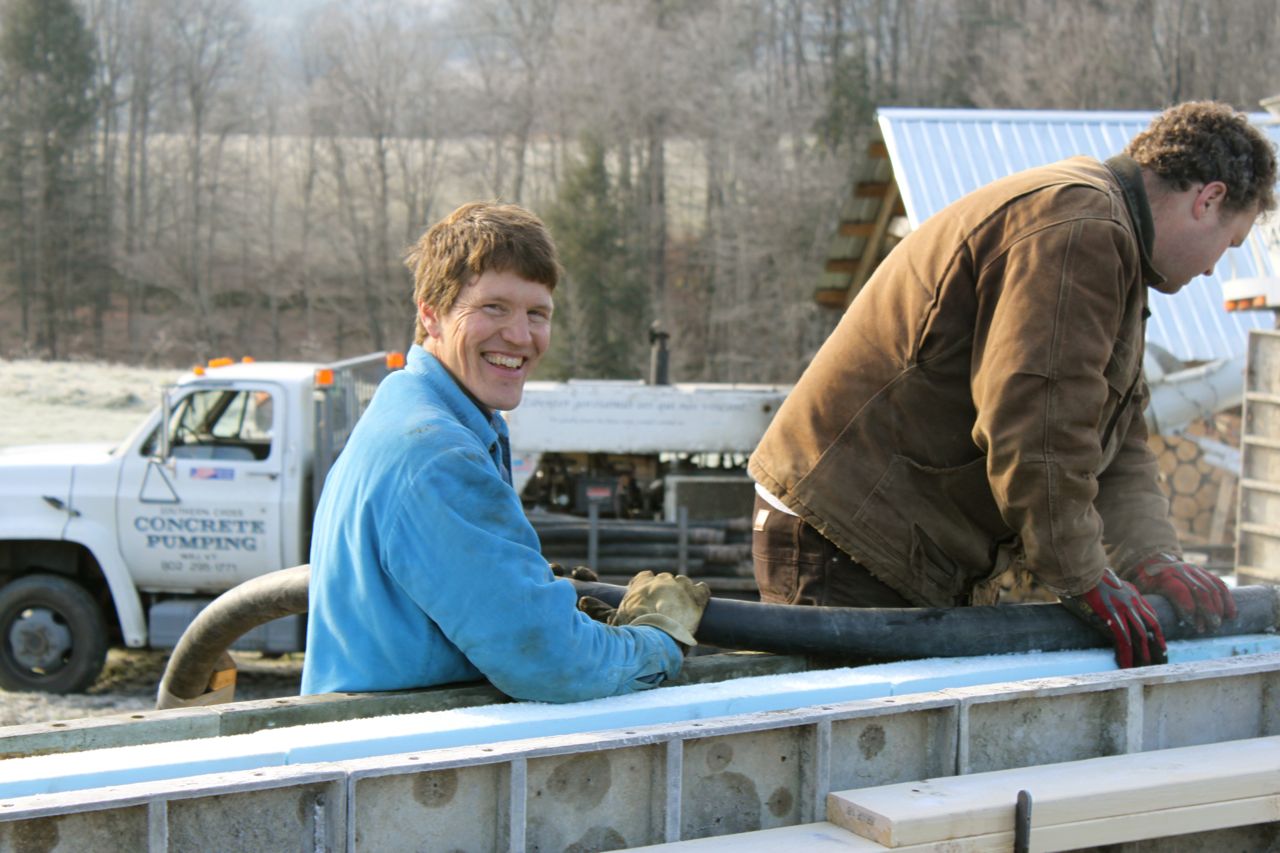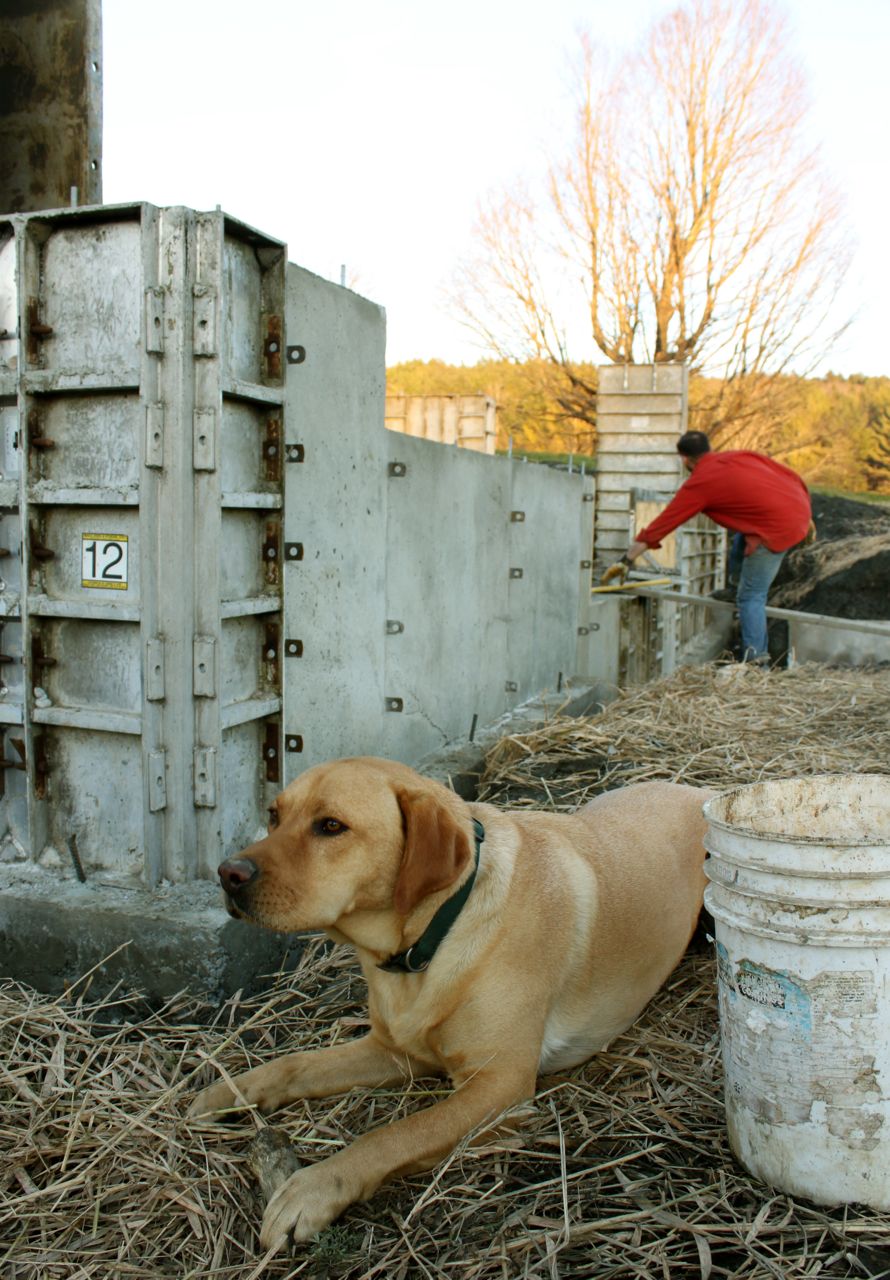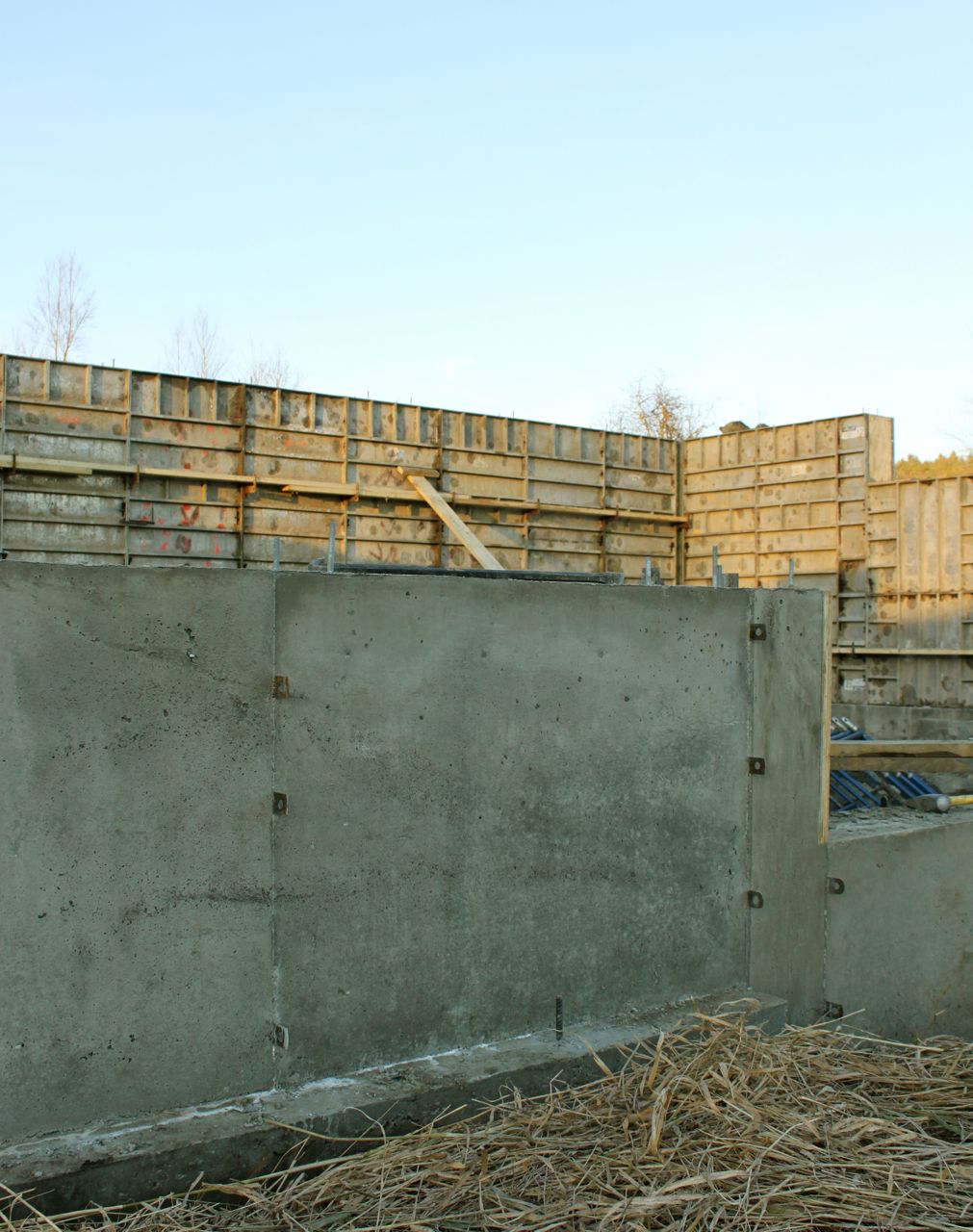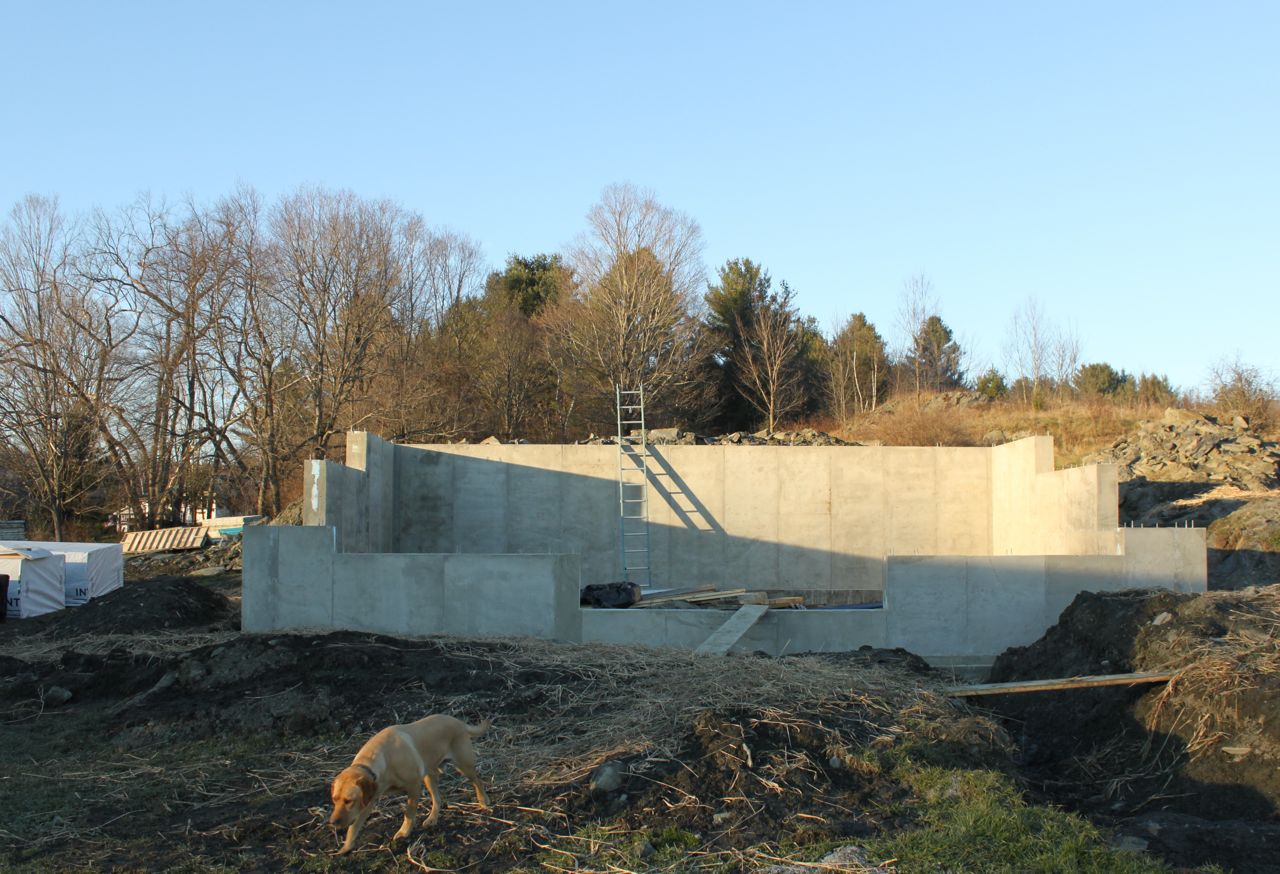studio walls are forming . . .
The past couple of weeks since our pottery studio footing pour have been epic. (Wait, I've been using that word a lot lately . . . hmm.) The work of forming our foundation walls with the heavy aluminum forms we borrowed from a friend was just plain hard work! The learning curve has been steep, to say the least. Wrapping our brains around form ties, re-bar patterns, slumps, drops, release agents, you name it, it's all been new.
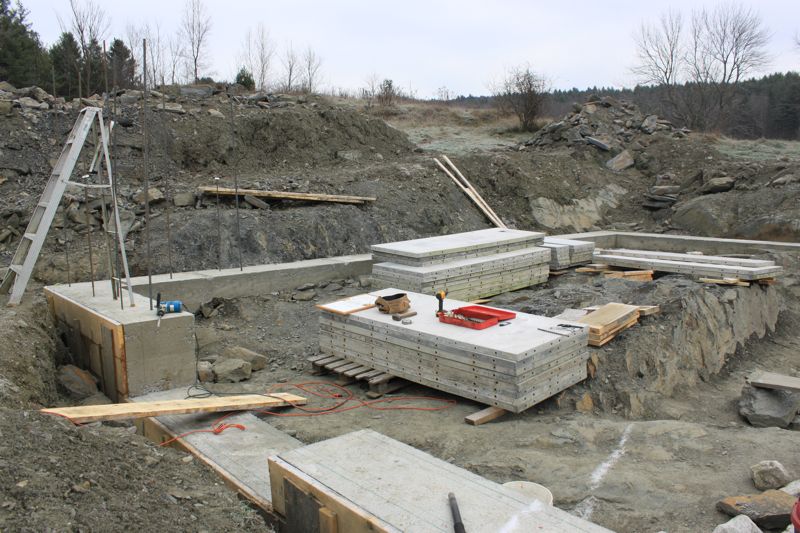
Fortunately, we got off to a good start because our footing was lovely and level and square (we fussed around a lot to get it right!) making the job of marking out the form placement, holes to be drilled for vertical re-bar, etc, an easy one - but that's where 'easy' ended and the real work began.
We chose to use a relatively unknown form of foundation insulation, where the rigid foam, or "blueboard," goes INside the concrete, rather than outside or inside the building. It's sort of like a structural insulated panel (a.k.a. SIPS), except with concrete. They- being Thermomass, the company we used- call it "concrete sandwich technology." I love that - gets right to the heart of it. Four inches of concrete, four inches blueboard, four inches concrete. Nice. And. Cozy.
We worked for many solid days on this - in the end it was about two weeks between pours. Thankfully, we had at least two extra pairs of hands on any given day - there were so many pieces of this puzzle to keep a handle on. It was sort of like a very large erector set, with a lot more weight - and a lot more at stake. We were also working against a deadline - that of our builder (more on George a bit later!) - oh, and WINTER. No big deal. ;)
But we got it all put together in time for a mid-November, Friday morning pour. (There were, at times, truck headlights and headlamps needed to get the job done. Daylight savings is tough on outdoor work!)
On the morning of the pour, our good friends Zane and Alex, from whom we borrowed the forms, were on site to coordinate and assist, as was a new friend, Jim the irreverent and entertaining concrete pumper extraordinaire. (A title he gave himself, but that we would not refute.)
One of the most interesting parts of doing this ourselves has been learning about the consistencies (or slump) of the mix. Concrete is basically a mix of sand, stone, water, and Portland cement, and is not unlike what we used in places on our kiln's exterior. I suppose we love these malleable, mold-able materials, and the mix needed for this wall - given all its narrow channels and re-bar and fiber spacer rods - was one that would move well in and around all the gaps, but remain strong once cured.
In the end, it took about four hours and eighteen cubic yards of concrete to fill the walls; the pour was a big success. There were no blow-outs, the forms didn't even creak, or pop, or send the steel wedges that hold in the pins - that hold everything together - flying through the air. Everything remained as it should.
When the forms came off three days later (concrete is happier and stronger when it can cure slowly), the wall was a beauty.
Phew, what a job that was. Of course we say now that we'll never do it again . . . we very well might eat our words someday.
I'm also pretty sure that someday, we'll be amazed that we pulled this off.
OK, let's be honest, that 'someday' is today . . .
~Becca
